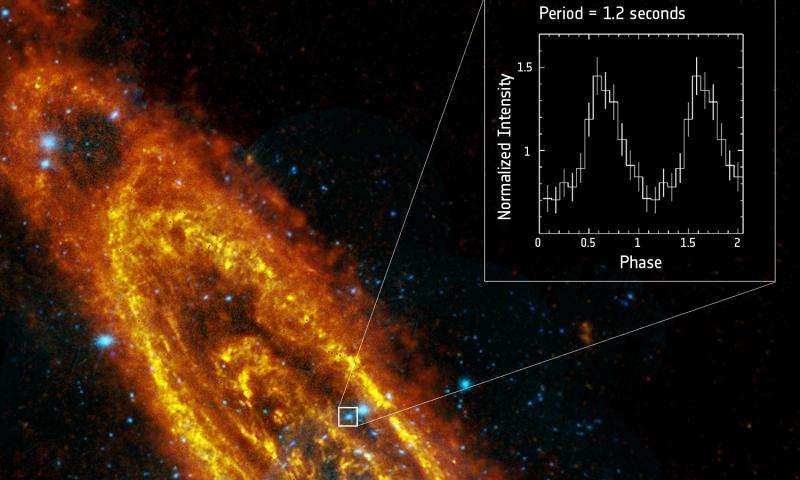Andromeda's first spinning neutron star found

Andromeda's pulsing neutron star. Credit: Andromeda: ESA/Herschel/PACS/SPIRE/J. Fritz, U. Gent/XMM-Newton/EPIC/W. Pietsch, MPE; data: P. Esposito et al. (2016)
Decades of searching in the Milky Way's nearby 'twin' galaxy Andromeda have finally paid off, with the discovery of an elusive breed of stellar corpse, a neutron star, by ESA's XMM-Newton space telescope.
Andromeda, or M31, is a popular target among astronomers. Under clear, dark skies it is even visible to the naked eye. Its proximity and similarity in structure to our own spiral galaxy, the Milky Way, make it an important natural laboratory for astronomers. It has been extensively studied for decades by telescopes covering the whole electromagnetic spectrum.
Despite being extremely well studied, one particular class of object had never been detected: spinning neutron stars.
Neutron stars are the small and extraordinarily dense remains of a once-massive star that exploded as a powerful supernova at the end of its natural life. They often spin very rapidly and can sweep regular pulses of radiation towards Earth, like a lighthouse beacon appearing to flash on and off as it rotates.